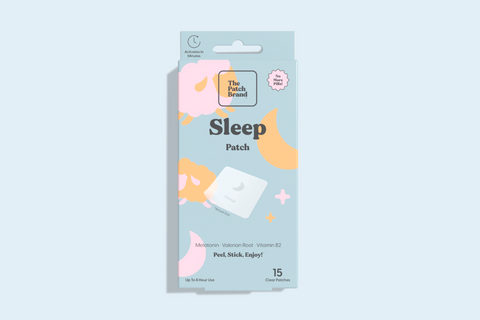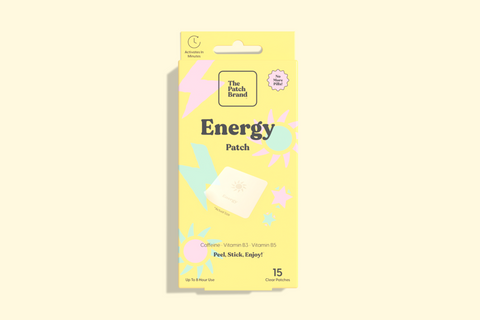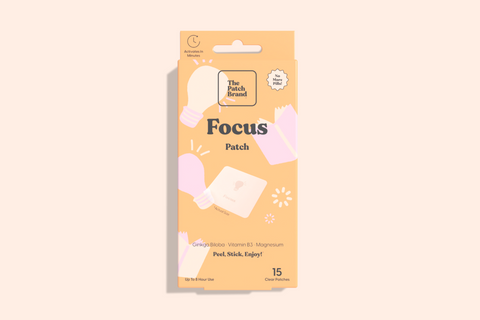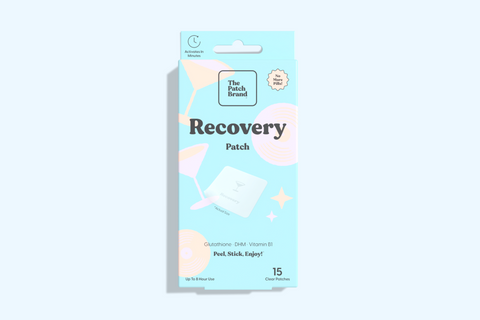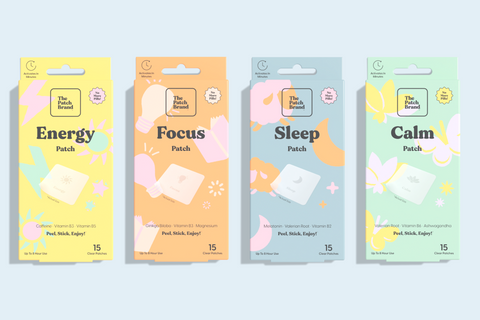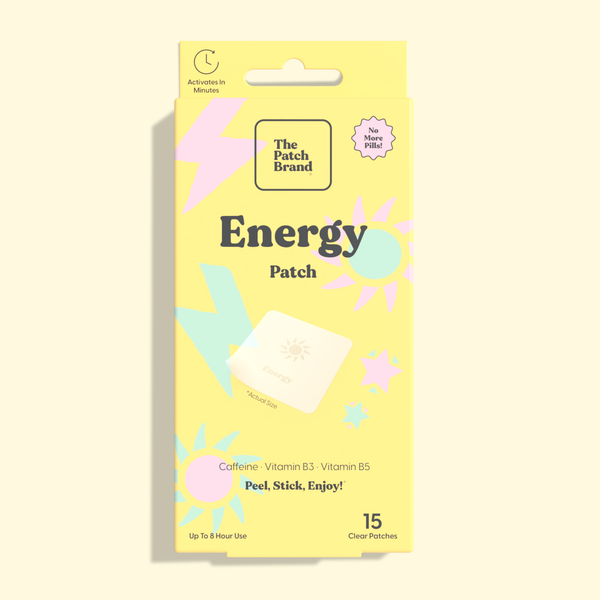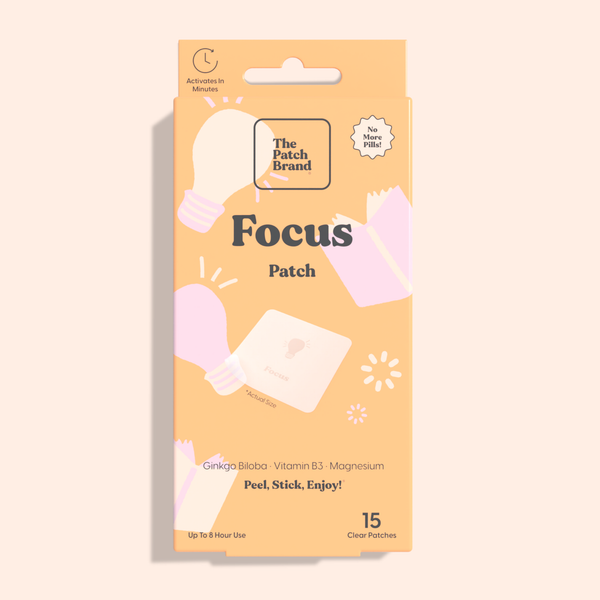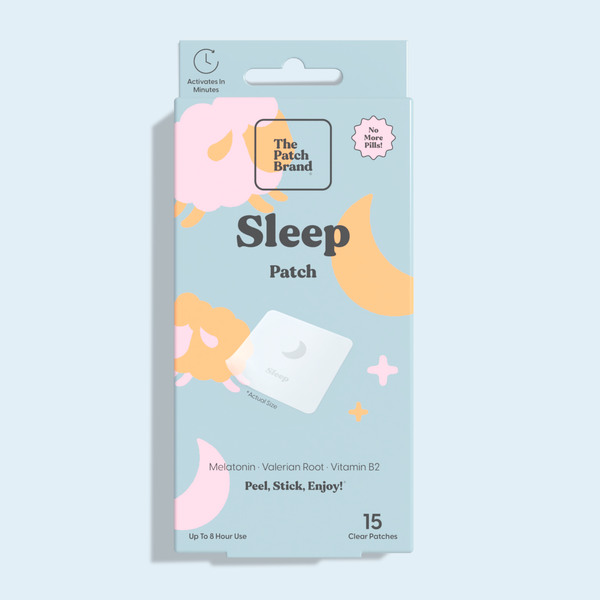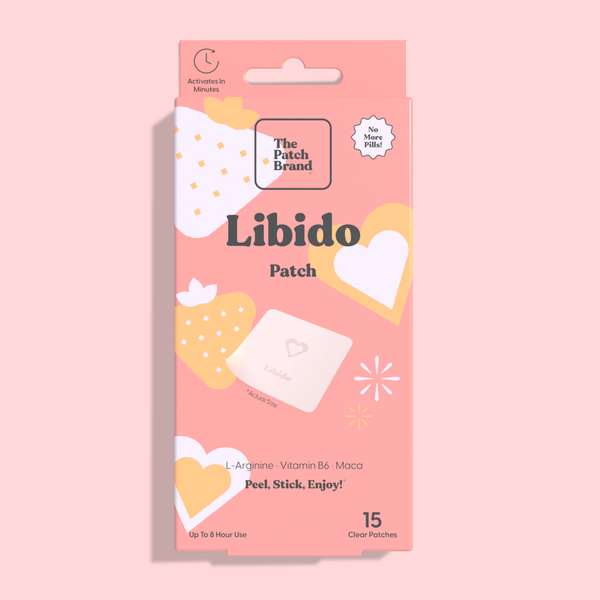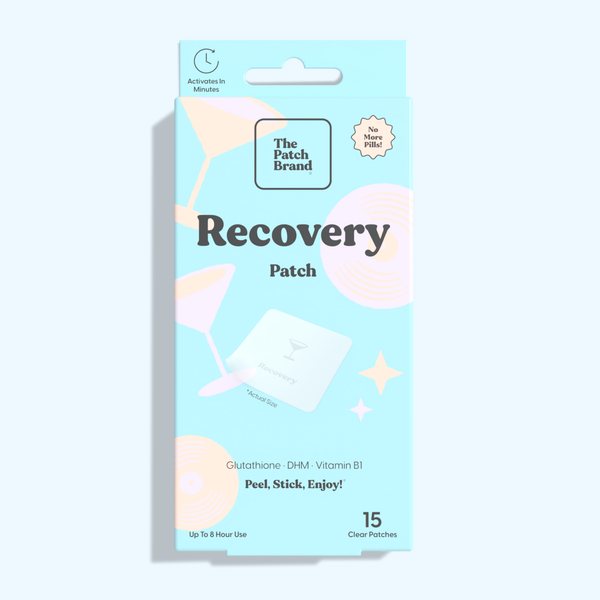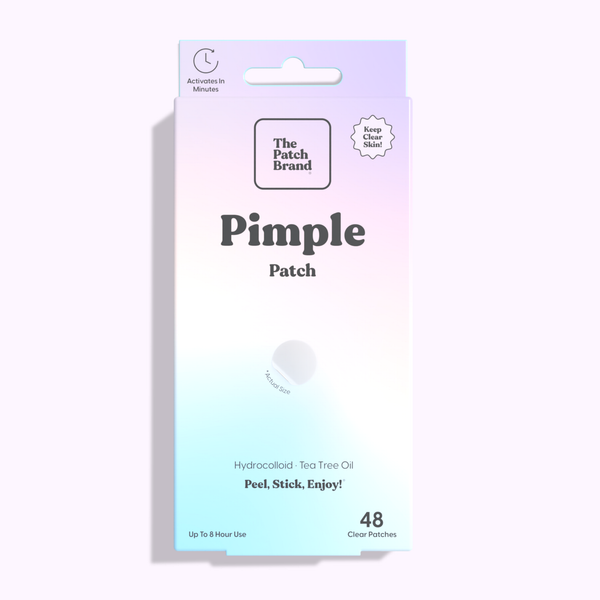Sleep is essential for maintaining good health and well-being. Unfortunately, many people struggle with getting a good night's sleep, leading them to seek out sleep aids. While traditional sleep pills have been popular for a long time, natural sleep aids such as sleep patches are gaining recognition as a more effective and safer option. In this blog post, we'll discuss the benefits of using sleep patches over sleep pills, particularly those containing melatonin.
What Are Sleep Patches?
Patches for sleep are a type of natural sleep aid that is applied to the skin. They contain a combination of natural ingredients that are released into the body through the skin to promote relaxation and improve sleep quality.
Melatonin patches are a specific type of sleep patch that contains the hormone melatonin, which plays a key role in regulating the body's sleep-wake cycle.
How Sleep Patches Work
Sleep patches work by gradually releasing their active ingredients into the bloodstream through the skin. The sustained release of the ingredients ensures a more effective and longer-lasting effect on the body, leading to a better quality of sleep. A
melatonin aid works by supplementing the body's natural levels of melatonin, which are typically higher at night and lower during the day. This helps to regulate the sleep-wake cycle and promote better sleep.
Benefits of Sleep Patches Compared to Sleep Pills
There are several melatonin benefits of using a sleep patch rather than taking melatonin pills. The benefits of melatonin patches include:
Reduced Risk of Side Effects
Sleep pills are a common remedy for insomnia and other sleep disorders, recognized for their ability to facilitate quicker sleep onset and longer sleep duration. However, these benefits come with potential drawbacks that need careful consideration. The side effects of sleep medications can sometimes overshadow their advantages, impacting the daily lives and overall health of those who use them. Below is a detailed exploration of these side effects:
-
Daytime Drowsiness: One of the most frequently reported side effects of sleep medications is daytime drowsiness. This condition severely hampers the user's ability to engage effectively in daily responsibilities such as work, education, or general activities. The issue arises because the sedative components of the sleep pills remain in the bloodstream even after waking, diminishing alertness and slowing reaction times. Such impairment can lead to difficulties in concentration, increased risk of accidents, and a pervasive sense of fatigue that lasts throughout the day, often necessitating additional interventions to manage these disruptive effects.
-
Dizziness: Dizziness is another troubling side effect of many sleep medications. Users often report feelings of lightheadedness and a sensation akin to being on the verge of fainting, which can be especially problematic when stability and precise motor control are required. This symptom stems from the medication’s suppressive effects on the central nervous system, hindering the body’s ability to regulate balance and spatial orientation. This kind of impairment poses a serious safety risk to anyone who drives or operates heavy machinery because it increases the chance of falls and injuries.
-
Potential for Dependency: Perhaps the most severe risk associated with the use of sleep pills is the potential for developing a dependency. Dependency can manifest as either psychological, where the individual believes they cannot sleep without the medication, or physical, where the body shows withdrawal symptoms if the medication is stopped abruptly. This dependency can lead to a vicious cycle of escalating use, as higher doses become necessary to achieve the same sleep-inducing effect, leading potentially to addiction. Addressing this risk requires careful management and monitoring by healthcare professionals to prevent long-term dependency issues.
The implications of these side effects are profound, affecting not just the sleep patterns of individuals but also their overall quality of life and health. As such, while sleep pills serve an important role in managing sleep disorders, their use must be approached with caution and under medical supervision.
Convenient and Easy to Use
These patches are simply applied to the skin, allowing the active ingredients to be absorbed throughout the night. This method of delivery is particularly advantageous for those who struggle with pill fatigue or the inconvenience of needing to remember to take medication at specific times. In contrast, sleep pills often require careful timing and can be easily forgotten in a busy schedule. Sleep patches eliminate these challenges, providing a straightforward, "set it and forget it" solution to sleep issues, making them an ideal choice for those seeking a hassle-free aid to better sleep.
Suitable for Sensitive Stomachs
Sleep patches offer a significant advantage for individuals with sensitive stomachs who may experience gastrointestinal discomfort from oral sleep medications. For those who are often limited in their choice of sleep aids due to digestive sensitivities, sleep patches can be a game-changer. They provide a non-invasive, digestive-friendly alternative that enhances sleep quality without the discomfort and potential digestive disruption brought on by traditional sleep pills.
Popular Types of Sleep Patches
Melatonin Patches
A melatonin patch stands out as a leading choice among sleep aids due to its convenient delivery method and effectiveness in enhancing sleep quality. These patches are especially favored by those dealing with jet lag or disrupted sleep cycles caused by shift work or other irregular schedules. The patch gradually releases a controlled amount of melatonin for sleep, a hormone naturally produced by the pineal gland that regulates sleep-wake cycles, directly through the skin into the bloodstream. Users often report a natural onset of sleepiness, improved overall sleep quality, and a reduction in the time it takes to fall asleep. This type of patch is a straightforward, non-invasive option for those seeking a natural aid to enhance sleep without resorting to pharmaceutical sleep medications.
Valerian Root Patches
Valerian root patches are an herbal sleep aid designed to harness the sedative properties of the valerian plant, a remedy used since ancient times to
address insomnia and nervousness. These patches provide a steady release of the herb's active ingredients directly into the bloodstream, enhancing its efficacy and duration of action compared to oral forms. The gradual infusion helps to mitigate the common disturbances in sleep architecture seen with intermittent dosing, leading to deeper, more restorative sleep. Users of valerian root patches often report not only improved sleep quality but also an enhanced ability to relax during the daytime. This natural, non-pharmacological approach is particularly appealing to those looking to avoid synthetic drugs and their potential side effects.
Chamomile Patches
Chamomile patches provide a novel method to benefit from the calming effects of chamomile, a plant widely regarded for its gentle sedative qualities and its use in traditional medicine as a relaxant and sleep aid. By delivering chamomile extracts directly through the skin, these patches ensure consistent and prolonged absorption, which may enhance the bioavailability and effectiveness of the active compounds. Chamomile is also known for its anti-inflammatory and anti-anxiety benefits, making these patches a multi-functional natural remedy. Users typically find that these patches help in reducing the time it takes to fall asleep and improve the overall sleep experience without the need for synthetic sleeping pills. They are particularly suited for those seeking a gentle, natural way to manage sleep issues.
Magnesium Patches
Magnesium patches are an effective tool in the management of sleep disorders, utilizing the essential mineral magnesium, which plays a pivotal role in over 300 enzymatic reactions in the body, including those that regulate neurological and muscular functions. By improving magnesium levels, these patches help in the relaxation of the muscles and the nervous system, which can lead to better sleep quality and duration. They are especially beneficial for individuals experiencing restless leg syndrome or those who have difficulty staying asleep. This straightforward approach to boosting magnesium intake is non-invasive and easy to use, offering a practical solution for improving sleep without pharmaceuticals.
How to Use Sleep Patches Safely and Effectively
Proper application of sleep patches is crucial for maximizing their therapeutic benefits while ensuring safety. These patches, designed to promote better sleep patterns, need to be used according to specific guidelines. Misapplication can reduce their efficacy or lead to potential side effects. Following a detailed and methodical application process ensures the effectiveness of the sleep aid, minimizing risks and enhancing sleep quality. Here are detailed steps to follow for optimal use:
-
Ensure the Skin is Clean and Dry Before Application: Before applying a sleep patch, it is essential to prepare the skin properly to ensure the patch adheres well and functions effectively. Start by washing the area with mild soap and water to remove any dirt, oil, or makeup. After washing, thoroughly dry the skin to prevent moisture from interfering with the adhesive. This step is critical because any residue or moisture can prevent the patch from sticking properly, which may decrease the effectiveness of the medicinal ingredients absorbed through the skin. Clean skin also reduces the risk of irritation or infection that could arise from trapped dirt or bacteria under the patch.
-
Opt for Hairless Areas Like the Upper Arm, Thigh, or Back for Patch Placement: Choosing the right location on the body to apply a sleep patch is vital for comfort and effectiveness. Hairless areas are preferred because hair can hinder the patch’s ability to stick securely and uniformly, which can impede the consistent delivery of the active ingredients. The upper arm, thigh, or back are ideal as these areas typically have less hair and undergo minimal movement during sleep, reducing the risk of the patch peeling off during the night. Additionally, selecting an area with minimal hair avoids discomfort that may result from removing the patch.
-
Adhere Strictly to the Dosage Instructions Provided: It is important to follow the dosage instructions that come with the sleep patches exactly as specified. This includes how often to apply a new patch, how long to keep it on, and the total duration of use. Overusing or underusing the patches can be ineffective or harmful. Dosage instructions are based on clinical studies that determine the optimal amounts of the active ingredient to be absorbed over a specific period to ensure safety and effectiveness. Adhering to these guidelines not only maximizes the potential benefits but also minimizes the risk of side effects.
-
Cease Use and Seek Medical Advice if You Notice Any Adverse Reactions: While sleep patches are generally safe, individual reactions can vary. Common signs of an adverse reaction include skin irritation, redness, or itching at the application site. More severe reactions could include dizziness, headaches, or unusual sleep disturbances. If you experience any of these symptoms, it’s important to remove the patch immediately and consult with a healthcare professional. They can guide whether to discontinue use permanently or try a different brand or type of sleep aid. This proactive approach ensures that any potential risks are addressed promptly, safeguarding your health.
By adhering to these specific steps when using sleep patches, individuals can significantly improve their chances of experiencing a good night’s rest without complications. Ensuring proper application and compliance with the instructions provided not only optimizes the effectiveness of the patches but also enhances overall sleep quality, contributing to better health and well-being.
While sleep patches are generally safe and effective, it's always a good idea to consult with a healthcare professional before starting any new sleep aid regimen. This is especially important if you have a medical condition, are taking any medications, or are pregnant or breastfeeding.
Sleep patches offer
a natural and effective alternative to traditional sleep pills. They use natural ingredients to promote relaxation and better sleep quality, and they have a lower risk of side effects compared to sleep pills. Melatonin patches, valerian root patches, chamomile patches, and magnesium patches are all popular types of sleep patches that can aid in improving sleep quality. Proper application of sleep patches and following recommended dosages are essential for safe and effective use. If you're looking for a natural and effective solution to sleep problems, sleep patches could be the answer you're looking for.
Helpful Links



